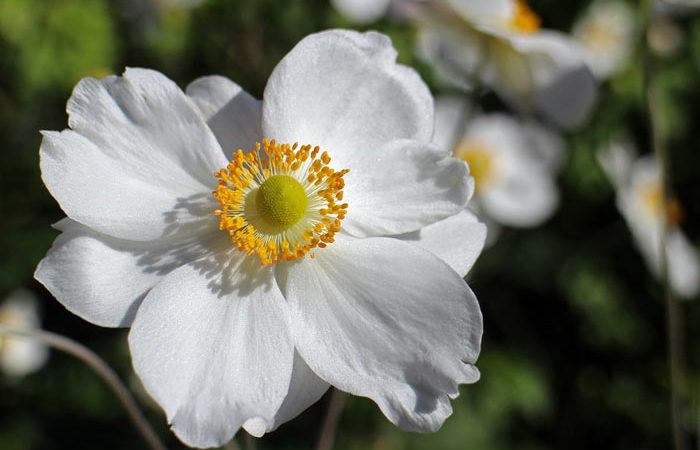
There are many kinds of Anemones found growing in cultivated gardens, as well as in the wild of our woods. Some are among the first flowers to bloom along the river banks in the Spring and some bloom even after the early frosts of autumn. All thrive under cool conditions and in many cases the ground should be covered with leaf mold to keep it cool. The early blooming varieties such as the Pasque Flower (Anemone pulsatilla) grow about 9 inches high and the purplish flowers are borne in profusion during April.
The Pasque Flower is followed by seed pods covered with silky hairs which stay on the plant for a considerable time. But of all the Anemones, the Japanese Wind Flower (A japonica) is the largest and the best one to grow for our gardens. They begin blooming early in Fall and last until freezing weather cuts them down when only the Cosmos, Dahlias, and Chrysanthemums are left. The flowers are pure white, light and dark pink; they grow from 1 foot to 3 feet tall. They seem to thrive best when planted in front of shrubbery, evergreens or walls facing the south where they are protected from the northern winds.
Japanese Anemones have leathery foliage which is dark green on the surface and light green on the underside. The flower spikes grow straight. and erect from the center of the plant and bear many large, saucer-shaped flowers with a large center of yellow pollen masses. The good varieties are: Whirlwind, white; Queen Charlotte, pink; Geante des Blanches, white, and Kriemhilde, rose. There are also rosy reds and crimsons.
Uses. Anemones are charming when used as cut flowers especially when combined with fine ferns or Asparagus plumosus. The dwarf varieties which bloom in the Spring are used in rock gardens, while the others are used in borders. The Japanese Anemones bloom when flowers are scarce and with slight protection from the early frosts, they will bloom two or three weeks after many other plants are killed.
Growing habits
All Anemones like a rich, moist soil, one which.is well drained in Winter. The early dwarf varieties will thrive in shady places, but the Japanese Wind Flowers need sunshine. They like lots of water and should be thoroughly soaked with water during the dry season. They need some Winter protection, such as a good covering of leaves. If the plants are moved, it should be in the Spring, but it is best to let them grow undisturbed in the border for a number of years. The ground should be worked deeply and well-manured.
How to grow from seed or roots
The seed should be sown in the Spring and the plants spaced at. 18 inches apart. The best method is to divide the roots. Save even the smallest roots when the plant is dug, because if they are cut into 2-inch lengths and placed in sandy soil they will produce little plants. When well started these new plants may be placed in their permanent quarters.
.Information on 75+ Perennials

